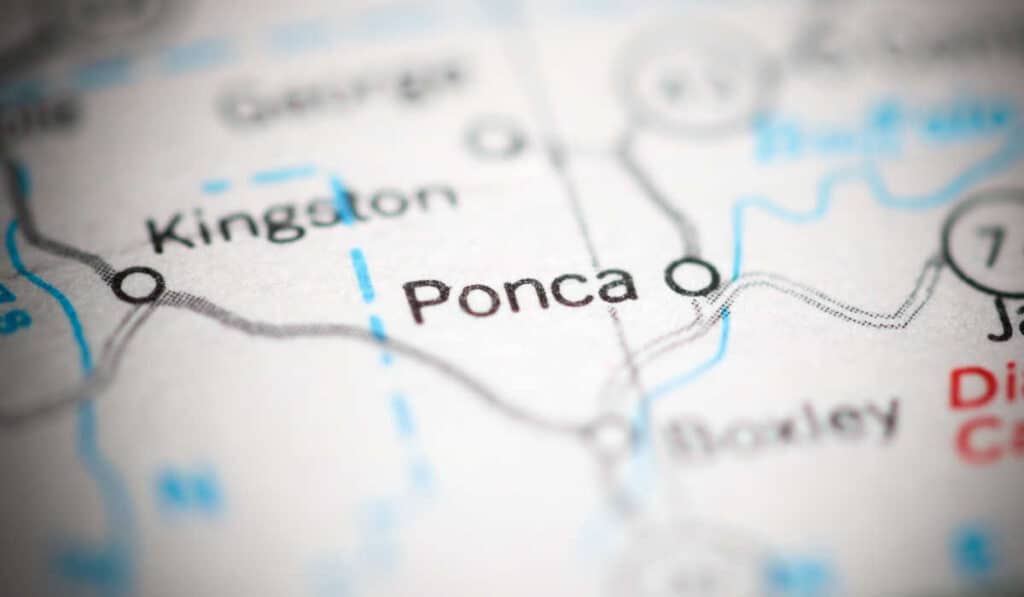Arkansas is a state that experiences a variety of weather events, and one of the more notable and damaging occurrences are hail storms. Hail is a type of frozen precipitation that forms when thunderstorm updrafts carry raindrops upward into extremely cold areas of the atmosphere, causing them to freeze. These frozen pellets can vary in size, but when they become large enough, they can wreak havoc on property, infrastructure, and even threaten safety.
I have observed in recent years that the frequency and intensity of hail storms in Arkansas have increased. Cities across the state have encountered large hail, sometimes reaching two to three inches in diameter, resulting in significant damage to homes, vehicles, and crops. As these storms continue to impact our communities, it is essential for Arkansas residents to stay informed about the potential risks and take necessary precautions when hail is in the forecast.
Understanding Hail Storms
I’ve observed that hail storms are a fascinating and sometimes destructive meteorological phenomenon. Hail forms when strong updrafts in thunderstorms carry raindrops upward into freezing temperatures, causing the rain to freeze and accumulate layers of ice. These ice particles, known as hailstones, eventually become too heavy for the storm’s updrafts to support and fall to the ground, creating a hailstorm.
Arkansas is no stranger to severe storms, including hailstorms. In fact, on June 15, 2023, the state experienced intense hail that pummeled lakes and surrounding areas. These hailstorms can cause significant damage to property, vehicles, and even crops.
In my experience, the size of the hailstones is a key factor in determining the severity of the damage caused by a hailstorm. They can range from small pea-sized stones to larger ones with diameters of three inches or more. The larger the hailstone, the greater the potential for destruction.
It’s important for me to stay informed about the potential for hailstorms in Arkansas and to be prepared for their effects. One way to do this is by monitoring local weather alerts and forecasts to learn about the likelihood of hailstorms developing.
Hailstorms can occur in any region where the necessary meteorological conditions exist, but certain areas are more prone to them. For example, the central region of Arkansas seems to have been particularly affected by hailstorms in recent years, as evidenced by hail blanketing the area on several occasions.
Staying informed and prepared for potential hailstorms, as well as understanding the science behind them, can be crucial in minimizing the impact they have on my life and property in Arkansas.
History of Arkansas Hail Storms
Tornadoes and Hailstorms

I have come across interesting facts about Arkansas and its history with hailstorms and severe weather. AR, or Arkansas, often experiences hailstorms and tornadoes due to its location in the southern-central United States. The National Weather Service plays a crucial role in updating and maintaining the records regarding these severe weather events.
In the history of Arkansas, there have been numerous examples of severe storms that brought significant hail and tornado activity. One such recent incident was a historic hailstorm in June that left quite an impact on the state. I also noticed that the Little Rock area has had 44 hail reports by trained spotters and has been under severe weather warnings 86 times during the past 12 months.
As I looked into the available data, I discovered that NOAA’s National Centers for Environmental Information contains valuable resources on tornado and hailstorm reports within Arkansas dating back to January 1950. Using their data, it is clear to me that tornadoes are an essential aspect of Arkansas’ severe weather patterns, as the state experiences them quite frequently.
From my understanding of these severe storms, I see that hail can cause substantial damage depending on its size; sometimes reaching baseball or even softball sizes. With these sizes, property and crops can experience severe damage, and personal safety becomes a significant concern during such events.
In conclusion, the history of Arkansas hailstorms and tornado reports highlights the state’s constant experience with severe thunderstorms. The National Weather Service’s efforts to document and inform the public about these events are crucial in ensuring proper safety and response measures are taken during these times.
Impact and Damage of Hail Storms

In recent times, Arkansas has experienced severe hailstorms that have caused significant damage to homes, vehicles, and infrastructure. Large hail, in particular, has had a substantial impact on various regions of the state. As a resident, I’ve witnessed the destruction first-hand, and I’ve had to adapt to the challenges that these weather events bring.
Power Outages
One common consequence of hailstorms in Arkansas is power outages. The combination of strong winds and large hail can wreak havoc on power lines and electrical infrastructure. This often results in temporary disruptions to residential electricity supply and in some cases, extended blackouts. For example, a hailstorm in Central Arkansas damaged homes and cars, which might have caused power outages as well.
During a power outage, it is essential for me to stay informed and prepared. I make sure to have a backup power source, such as a generator or portable charger, readily available. Additionally, Istock up on essentials like non-perishable food items, bottled water, and batteries for flashlights. These measures help me navigate the inconvenience of a blackout and ensure that my family remains safe and comfortable.
In conclusion, hailstorms in Arkansas can cause significant damage and power outages in affected areas. As a resident, I must stay vigilant and prepared to deal with these weather-related challenges.
Storm Reporting and Analysis
National Weather Service Reports
Recently, Arkansas has experienced a series of severe storms with large hail and tornado activity. As a meteorologist, I closely follow the reports provided by the National Weather Service. This organization conducts comprehensive analysis of severe storm events and shares valuable and timely information with both local residents and other weather analysts.
In one particular event, Mountain View reported 3.00 inch hail in diameter. This storm also caused numerous trees to be blown down in Burns Park with trained storm spotters estimating winds to be around 70 mph. The National Weather Service recorded a total of 62 wind reports and 2 tornado reports on that day in Arkansas.
The National Weather Service briefing provides forecasts for severe weather events in Arkansas, with detailed information on possible hail, strong winds, and tornado occurrences. These predictions help residents take necessary precautions while also aiding meteorologists like myself in analyzing storm patterns and trends.
To keep myself updated on hail reports, I utilize resources like StormerSite’s database that track and record all hail events of 1 inch or larger. This tool allows me to easily view reports by date, location, and size of hailstones.
Severe storm reporting and analysis are crucial in understanding the impacts these events have on Arkansas and its residents. By paying attention to the National Weather Service reports and staying current on hail and tornado data, I remain dedicated to providing confident, knowledgeable, neutral, and clear information to ensure the safety and well-being of those affected by severe storms.
Regional Analysis of Hail Storms
West Arkansas
In West Arkansas, large hail has been known to cause significant damage. For example, in April 2022, hailstorms in this region produced hailstones up to three inches in diameter. With the close proximity of Oklahoma, hailstorms in this area can affect both states. My analysis of the region shows that West Arkansas may experience more severe hailstorms than other parts of the state, primarily due to its geographic location near the Mississippi and Tennessee valleys.
Little Rock
As the capital of Arkansas, Little Rock is situated in the central part of the state near the Arkansas River. Hailstorms can still impact this city, although they may be less frequent than in other regions. However, when severe storms do affect the area, they can still bring hailstones large enough to have substantial impacts on infrastructure and property. My research indicates that Little Rock might face a lower risk of hailstorms compared to West Arkansas, yet residents should remain vigilant.
Ward in Arkansas
Ward, located in the southern part of Arkansas, has also faced hailstorms in the past. Interestingly, the storms on July 2nd, 2023 spanned across multiple states including Arkansas, Kentucky, Alabama, Illinois, Indiana, and more. In this hailstorm, Ward experienced hail up to one inch in diameter. Although it’s not as intense as the storms in West Arkansas, this still signifies the presence of potential hailstorm risks. In my analysis, the level of risk of hailstorms in Ward seems to be lower compared to West Arkansas, but higher than Little Rock.
Hail Storms During Different Times
Morning Storms
I have observed that hail storms can occur at different times of the day in Arkansas, and these varying periods can present unique characteristics. In the mornings, severe storms often develop when the atmosphere is still relatively cool after the overnight hours. During this time, strong updrafts can carry raindrops into colder regions, where they freeze and form hailstones.
Morning hail storms in Arkansas may be accompanied by additional severe weather events, such as gusty winds and isolated tornadoes. It is crucial for me to stay aware of weather forecasts and updates, particularly during times when severe storms are more likely in the area.
Evening Storms
In contrast, evening hail storms in Arkansas often result from warm, humid conditions throughout the day. As the day progresses, warm air rises and can create instability in the atmosphere, leading to the development of severe storms. These storms can produce large-sized hail, as well as pose risks for gusty winds and tornadoes.
One notable evening hail storm event in Arkansas occurred in June, causing historical impacts across the state. Baseball-sized hail was reported, showcasing the extreme potential of these nighttime storms.
I find it essential to pay close attention to local weather reports and authorities during both morning and evening hours when severe storm risks are elevated. This allows me to stay prepared and safeguard my property and family against potential hail damage.
Concluding Remarks
I have observed that hail storms are indeed a significant concern in Arkansas. Severe storms have rolled through the region, with large hail causing considerable damage to cars, windows, roofs, and more across the state. These storms have been severe enough to prompt the governor to declare a state of emergency in response to the storms in June 2023.
As an Arkansas resident, it is crucial to be prepared for hail storms and the potential damage they can cause. This includes being informed of any severe weather alerts, having a plan in place for personal safety, as well as taking protective measures for property such as vehicles and homes. By staying aware of the weather conditions and being proactive in our approach to these storms, we can minimize the impact of hail damage on our daily lives.
In summary, I cannot emphasize enough the importance of being informed and prepared when it comes to hail storms in Arkansas. While we cannot control the weather, we can take steps to protect ourselves and our property from the potential damage caused by these storms. Stay safe, and keep an eye on the ever-changing weather in the Natural State!







